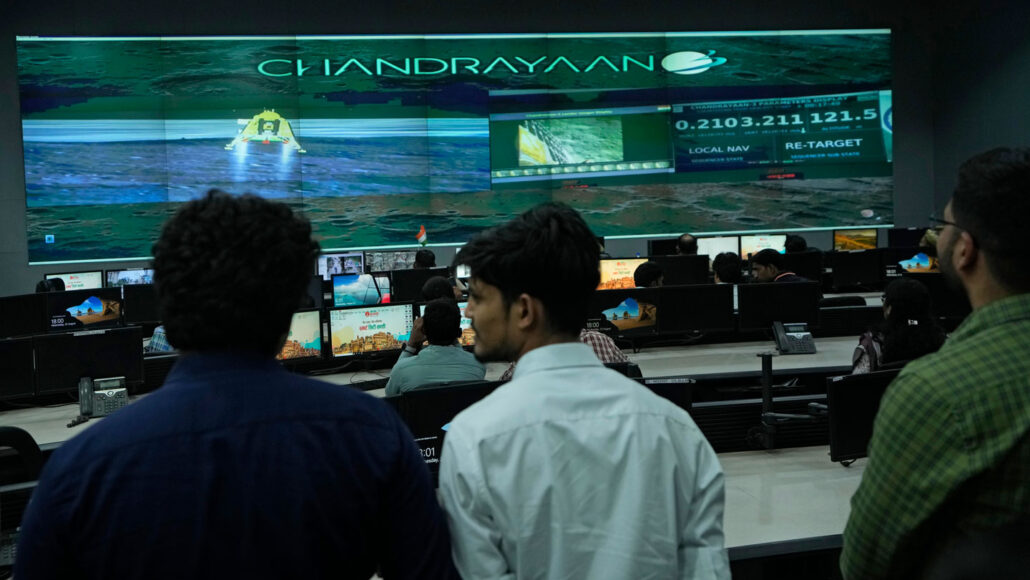“Space is hard,” a phrase that encapsulates the formidable challenges faced by humans and their machines in venturing beyond Earth. This adage has been reinforced time and again as attempts to land on the moon, a significant milestone first achieved by the Soviet Union’s Luna-9 probe nearly six decades ago, continue to be marred by failure. Recent endeavors to achieve this feat have been particularly riddled with difficulties.
India’s Triumph: Chandrayaan-3 Mission
However, on August 23, India achieved a historic milestone by successfully landing a spacecraft on the moon’s surface for the first time. The Chandrayaan-3 mission, launched on July 14, accomplished the landing of the Vikram lander and the Pragyan rover at the moon’s south pole. This region is believed to hold water ice, a vital resource that could provide drinking water and hydrogen fuel for future lunar inhabitants. This achievement followed India’s previous attempt, Chandrayaan-2, which suffered a lander crash in 2019.
This achievement elevates India to an exclusive group of nations that have achieved a “soft landing” on the moon, including the United States, the former Soviet Union, and China. The success of this mission, however, is juxtaposed against recent failures in lunar landings.
Setbacks in Lunar Landings: Russia and Japan
On August 19, Russia’s Luna-25 lander faced a tragic crash on the moon. The spacecraft, similar in size to a car, had been orbiting the moon before losing communication after initiating prelanding maneuvers. The Luna-25 was on its way to study the moon’s surface and tenuous atmosphere near the Boguslavsky crater in the southern pole region.
Japan also faced a setback earlier in the year when its Hakuto-R Mission 1 lander crashed on the lunar surface. The crash resulted from a miscalculation in the lander’s altitude caused by onboard software. This mission aimed to explore lunar dust after landing in the Atlas crater on the moon’s nearside.
Lunar Landing Challenges: No Atmosphere, Precise Landing Sites
The moon, despite being approximately 400,000 kilometers away from Earth, poses a complex challenge for spacecraft attempting to land. Unlike Earth, the moon lacks an atmosphere, rendering conventional mechanisms such as parachutes ineffective for slowing down descending objects. Dave Williams, a lunar and planetary scientist at NASA’s Goddard Space Flight Center, emphasizes that rockets are the sole means of slowing descent, which necessitates precise control of orientation and thrust.
The moon’s gravitational force, while weaker than Earth’s, can adversely impact a malfunctioning spacecraft in free fall. Additionally, identifying suitable landing sites proves intricate. Terrain that appears smooth from orbit could be strewn with obstacles, necessitating a spacecraft’s autonomous evaluation using sophisticated software.
Overcoming Communication Lag and Future Endeavors
Addressing the time lag in communication due to the finite speed of light presents another hurdle. Human operators on Earth cannot provide real-time guidance due to this delay. Nevertheless, the moon’s allure persists. Japan, on August 26, is set to launch its Smart Lander for Investigating Moon (SLIM) mission from the Tanegashima Space Center. While the landing date is yet to be announced, the probe aims to demonstrate technology and eventually touch down near Shioli crater on the moon’s nearside.
In the pursuit of lunar exploration, triumphs and challenges coexist. India’s successful landing stands as a testament to human ingenuity and determination in overcoming the complexities of space. While setbacks remind us of the difficulties, they also underscore the importance of continuous innovation and collaboration to conquer the vastness beyond Earth.















